Norco Optic
Wheel Size: 29’’ front / 29’’ or 27.5’’ rear
Travel: 125 mm rear / 140 mm front
Geometry Highlights:
- Sizes Offered: 1, 2, 3, 4, 5
- Headtube Angle: 65°
- Seat Tube Angle: 77° (size 3)
- Reach: 472.5 mm (size 3)
- Chainstay Length: 429 mm (29’’) or 423 mm (MX); Size 3
Frame Material: Aluminum and carbon fiber versions available
Price:
- Aluminum frame w/ RockShox Vivid Select+ shock: $2,099 USD / $2,399 CAD
- Carbon frame w/ RockShox Vivid Select+ shock: $3,849 / $4,999 CAD
- Complete bikes: $6,999 to $9,099 USD / $5,399 to $11,499 CAD
Blister’s Measured Weight (Optic C1 29, Size S4): 32.01 lb / 14.52 kg
Test Locations: Washington
Reviewer: 6’, 170 lbs / 183 cm, 77.1 kg
Test Duration: 4 months
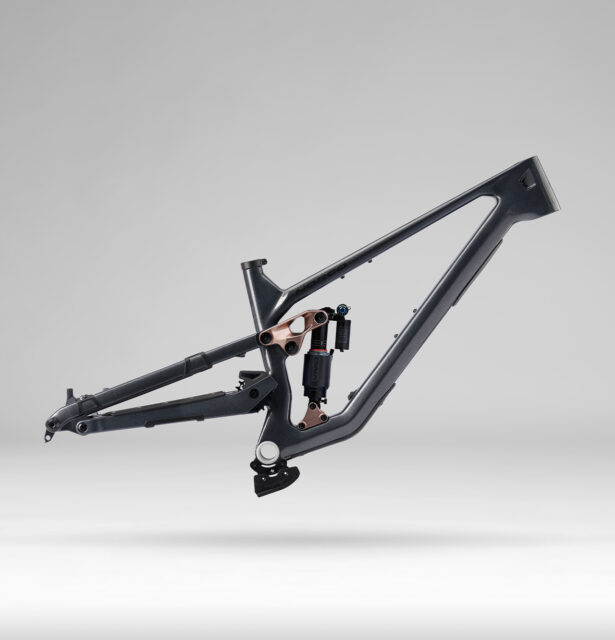
Intro
I’ll admit that I was surprised — but also quite intrigued — when I found out that Norco was going to a high-pivot layout for their short-travel Optic. Norco has a long history of building high-pivot bikes, and a whole lot of companies have jumped on that bandwagon in recent years, but a 125mm-travel one is still a rarity. So how would a suspension layout that’s most known for square-edged bump absorption and high-speed composure come together in a bike that’s meant to be well-rounded and versatile rather than a one-dimensional steamroller? I was eager to find out.
[Check out our First Look on the Optic for the rundown on its design and specs.]
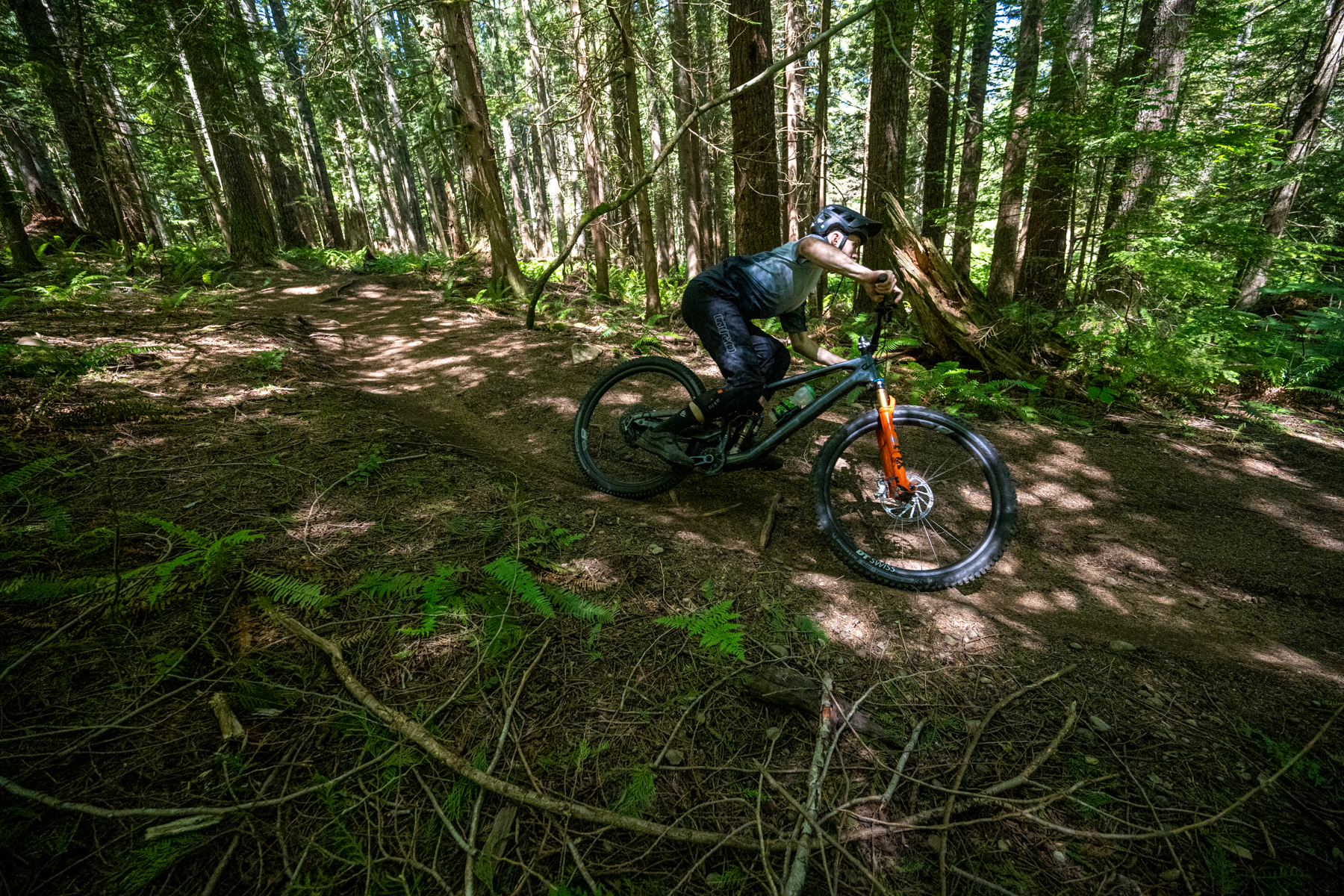
Fit & Sizing
David Golay (6’, 170 lb / 183 cm, 77.1 kg): Norco’s recommended sizing for the Optic (and its bigger sibling, the Sight) is notably progressive, but I don’t think they’ve gone off the deep end — the S4 Optic that they recommend for me is the right size for me. But it is one of the bigger fitting bikes I’ve been on in this class, and I’m definitely much closer to wanting to size down than I am interested in going up.
My first impression of the S4 Optic was that it’s a very big feeling bike. Granted, I had hopped on it straight out of the box, with only basic setup and cockpit adjustments — the stock 800 mm bar width is wider than I normally prefer, especially on a bike that’s on the larger end of the spectrum, fit-wise, but the seated cockpit position, in particular, felt very, very big. Trimming the bar down to 780 mm helped quite a bit, but the seated cockpit position of the S4 Optic is near the roomiest end of what I can get comfortable with. The slightly slacker seat tube and marginally lower stack height (or maybe more operatively, the lower bar position that the Optic favors) make its seated cockpit feel a touch bigger than that of the Sight, but they fit pretty similarly overall.
And as with the Sight, though, I stopped questioning the fit of the Optic once I stood up and started descending. It’s still a big, roomy bike — there’s no way I’d want to bump up to the S5 — but with the bars trimmed a bit and the cockpit set up to my liking, I got along with the S4 Optic really well. I’ll touch on the ways that the bigger sizing played into the overall performance of the Optic in a minute, but I wasn’t interested in dropping down to an S3 all told. I think I could ride an S3 comfortably enough, and if I was interested in making the Optic more maneuverable and playful feeling I could imagine making that jump down, but the S4 worked well for me.
Climbing
Despite typically being associated with more gravity-oriented use cases, there are bunch of examples of high-pivot bikes that pedal very efficiently and climb notably well — the Kavenz VHP 16 and Deviate Highlander II being prime examples — but I was still curious how the Optic would perform on the way up.
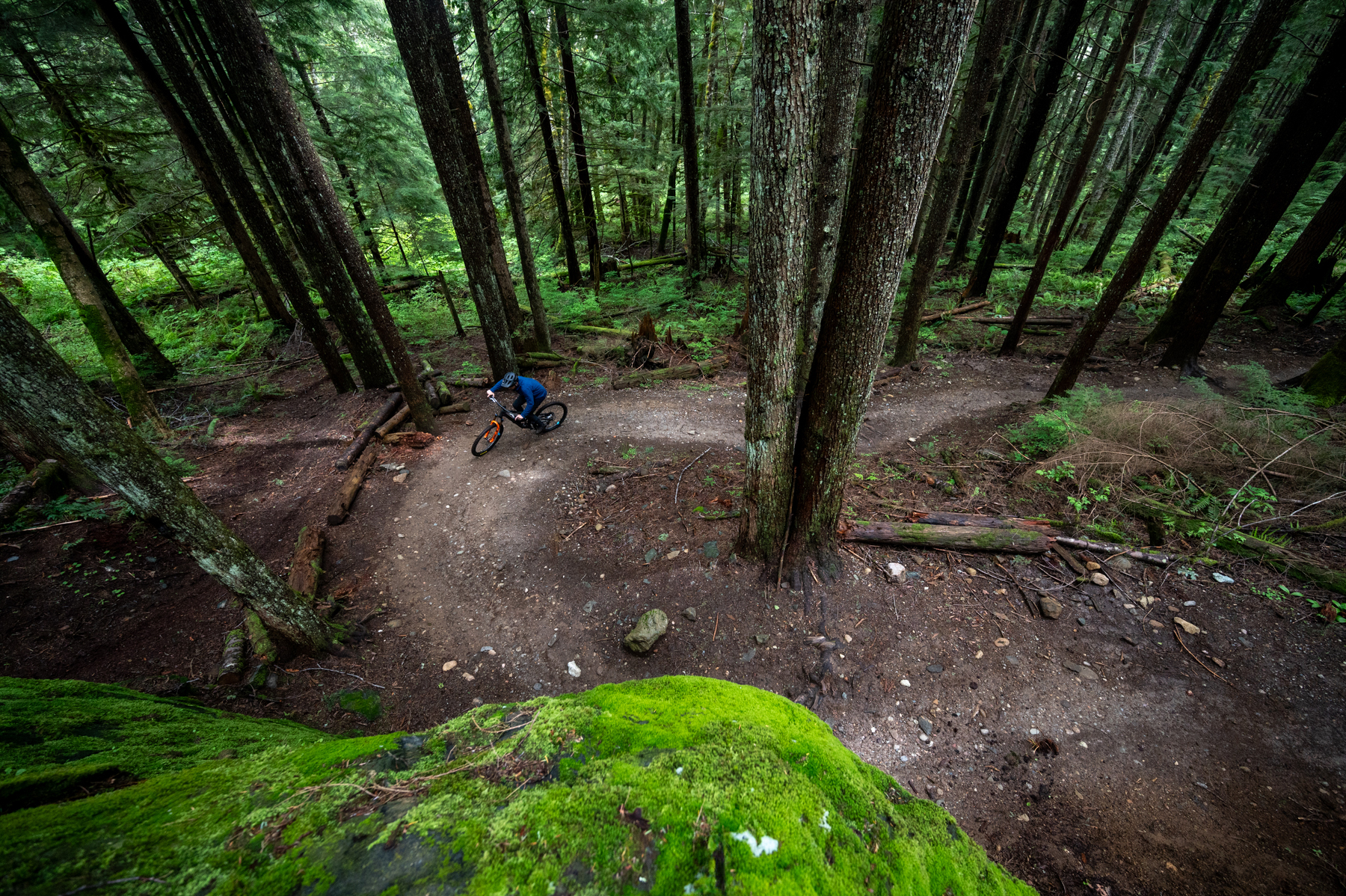
The Optic’s seated pedaling position feels far more derived from a bigger Enduro bike than it is akin to any number of (mostly slightly shorter travel), more XC-oriented short travel Trail bikes, such as the Specialized Epic Evo and Trek Top Fuel. The Optic’s seat tube angle is dialed back a touch from that of the Sight, but it’s still pretty steep. It’s a bike that’s quite happy to settle into a long grind up a steep fire road, while also being a little more eager to move in and out of the saddle and attack the occasional pitch more assertively than most full-on winch-and-plummet sort of longer travel bikes.
Given what the Optic does on the way down, and the sorts of riders that it’s most likely to appeal to (more on that in a minute), I think the balance that Norco has struck here is a good one. And particularly given that the Optic’s sizing trends pretty big, I’m glad the seat tube isn’t any slacker — I wouldn’t want any more effective top tube than the S4 Optic I’ve been riding. But riders coming off of bigger, burlier bikes looking for a more lively, versatile option will probably find the Optic to require less recalibration than XC folks who are interested in the Optic as a more capable descender than their typical steeds.
It’s a similar story with the Optic’s pedaling performance. It’s a fairly efficient bike overall, but quite as sharp as many of the more XC-oriented bikes in its general travel bracket. (BLISTER+ Members and folks who have our Digital Access Pass can check out our Deep Dive on the Optic for a whole bunch of those comparisons.) The Optic’s pedaling performance is generally more in line with a lot of ~130mm-travel Trail bikes that put more of an emphasis on descending performance than the class of more XC-derived Trail bikes, but with those expectations set appropriately, it’s a nice pedaling bike.
In my review of the Optic’s bigger sibling, the Sight, I wrote that Norco has done a good job of mitigating the extra drag that a high-pivot layout tends to introduce, and the same is true here — unsurprisingly so, given that the Sight and Optic share the same layout and idler pulley. As long as the chain is reasonably clean and well-lubricated, the Optic does great on that front; as per usual for high-pivot bikes, the drivetrain efficiency feels like it falls off a bit faster than it does on ones with a conventional layout once the chain starts to get gross.
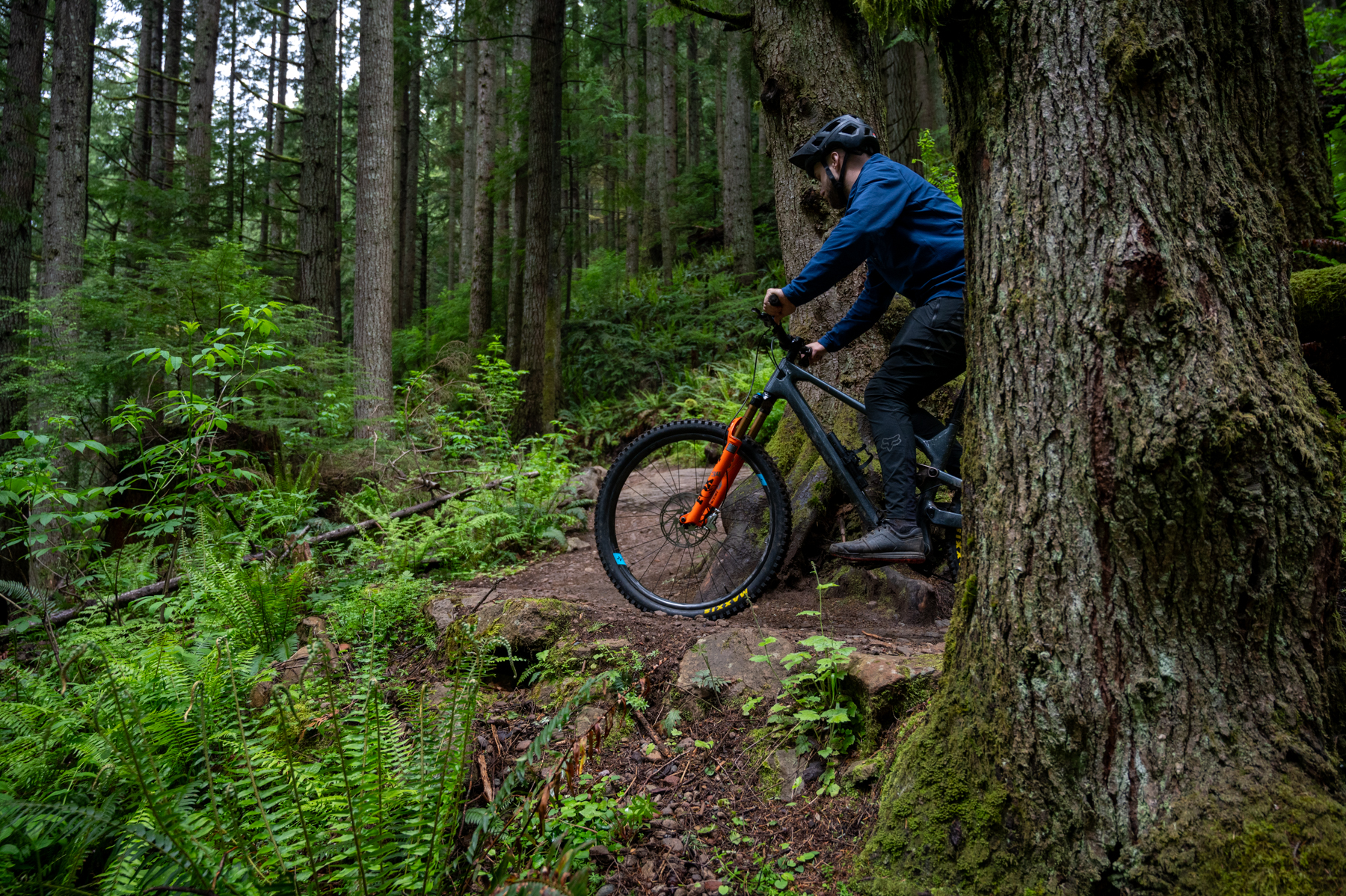
The Optic’s traction under power is also solid, but it feels like a bit more emphasis was placed on making it efficient than really maximizing pedaling grip. It’s a good technical climber if you’re into a bike that favors somewhat precise, dynamic riding over just tractoring its way up and over stuff. The relatively long wheelbase (1,259 mm) of the S4 Optic I’ve been riding does take a little more effort to maneuver in really tight, ledgy climbs than many more compact bikes do, but I’ve found it to be pretty manageable overall (though, granted, my home trails don’t feature as much of that kind of stuff as some other parts of the world).
Descending
The Optic is the shortest-travel high-pivot bike that I’ve ridden to date (by some margin) so I was very curious to see how it would all come together on the way down. The bike industry as a whole has gotten much better at making high-pivot bikes that aren’t just one-dimensional plow machines in recent years, but I didn’t have any clear expectations for what I’d find with the Optic. Would it feel like a relatively normal (if somewhat aggressive) shorter-travel Trail bike? Would it be caught between balancing efficiency and versatility with the planted and plow-y nature that’s typically associated with high-pivot bikes? Or something else entirely?
The short version is that I think Norco has done a very good job of making a short-travel high-pivot bike that feels entirely coherent as a shorter-travel Trail bike. It’s (unsurprisingly) much less XC-derived and ultra-quick-handling than a lot of bikes at that end of the spectrum, but it’s by no means a big outlier as ~130mm-travel Trail bikes go. The Optic is lively and energetic-feeling in its suspension performance, reasonably quick handling and agile at moderate speeds, and generally does not feel like a big Enduro bike trapped in a short-travel package.
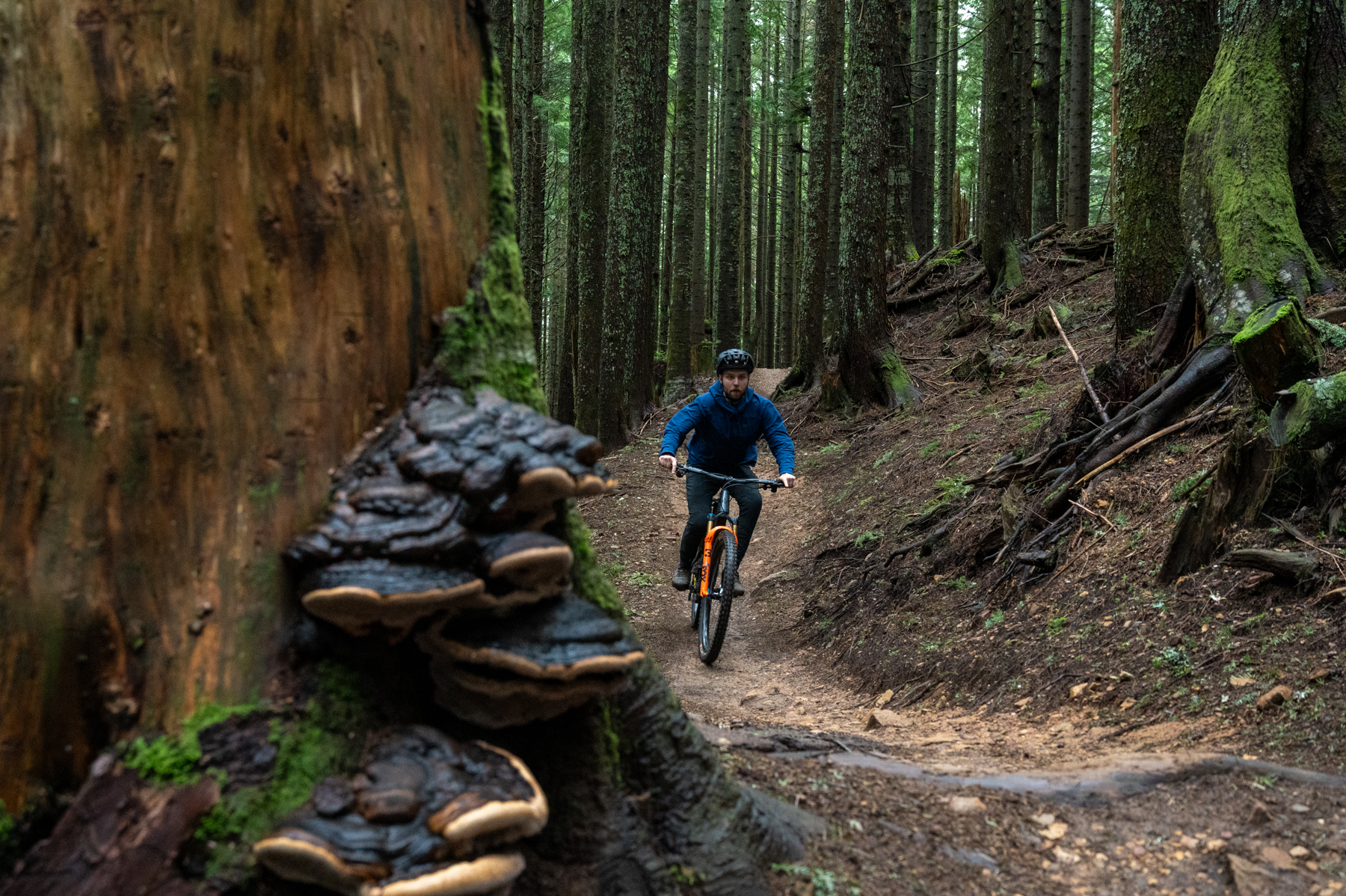
In fact, the thing that surprised me the most about the Optic is just how lively and sharp handling it is. It’s stable enough to handle some pretty burly descents if you’re riding relatively precisely, but if you’re looking for a bike to disabuse you of the notion that high-pivot bikes are all big, planted smash machines, the Optic will do the trick. It’s still on the more descending-oriented end of the spectrum as bikes in its travel range go, but the Optic feels quite energetic and eager to build speed by pumping through terrain features and doesn’t need a whole lot of speed and pitch to come alive.
The Optic is a blast on fast, flowy sections of trail, but also feels sharper handling and more nimble than I think I expected it to when things get tight and awkward. Its geometry numbers (apart from the fairly long reach, and moderately long wheelbase that results from it) are pretty normal for a shorter-travel Trail bike, but I didn’t anticipate how quick-handling and lively the Optic would feel.
As with its handling, the Optic’s suspension performance feels more energetic and lively than it is especially planted and composed. The Optic’s small-bump sensitivity and traction are solid, but it’s not a bike that tempted me to dust off the tired old cliche of saying it feels like it has more travel than it does — it’s a shorter-travel Trail bike through and through, just one that’s a little more stable and descending-oriented than the more XC-derived sorts of bikes in that class. The Optic makes good use of its relatively limited suspension travel when you put it into faster, rougher bits of trail, but it requires more precise riding and more care to pick clean lines and soak up bigger impacts than longer-travel bikes tend to — just as you’d expect from a 125mm-travel bike.
A thought I haven’t been able to shake since I started spending time on the Optic, though, is wondering just how much Norco is really getting out of the high-pivot layout. They’ve done a great job of making a coherent short-travel implementation that does the things you’d expect from a somewhat aggressive short-travel Trail bike well, so in some ways, it really doesn’t matter. The Optic rides very well, and the suspension layout is, at the end of the day, really just a means to an end rather than the overriding, defining feature of the bike.
But the high-pivot layout does add some weight and complexity to the bike, and a little bit of pedaling drag (again, mostly when the chain starts getting dry and/or gritty). And for a bike in the Optic’s class, those drawbacks feel more relevant than they might on a bigger, longer-travel bike — and the gains in bump absorption that you get in return feel somewhat diminished.
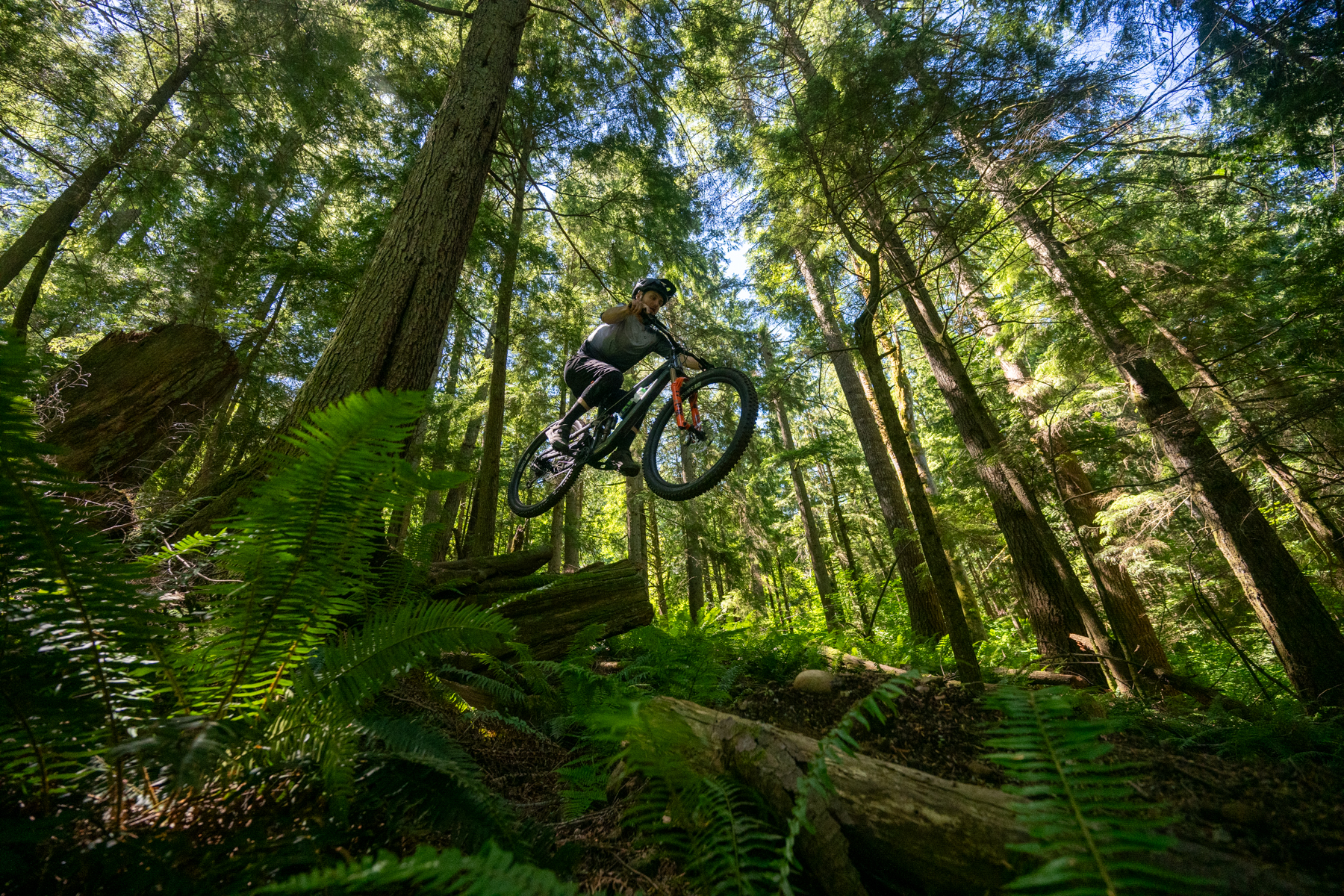
Again, I really like the way the Optic rides, and its suspension performance is quite good if you’re interested in a relatively lively, energetic feeling bike. My point is just that, if you’re hoping for the Optic to do lively short-travel bike things well and plow through chunky terrain at speed like a much longer-travel bike, I’d temper those expectations a bit. The new suspension layout hasn’t magically transformed the Optic into some best-of-all-worlds wonderbike — and it wouldn’t be fair to expect it to. The Optic is a really good short-travel Trail bike that’s a notch on the more descending-oriented end of the spectrum for that class, and it just happens to have a high-pivot layout.
I spent more time on the Optic in the stock 29er configuration for our C1 review bike but gave the MX layout a go for a handful of rides as well. As with the Sight, I think that Norco has generally done a good job of making the Optic feel coherent in both wheel size configurations, but I had a stronger preference for the 29er setup on the Optic than I did on the Sight. Going to a smaller rear wheel does make the Optic feel a little more nimble, but I wasn’t really tempted to push it in that direction most of the time, and the additional steering input needed to counteract the handling differences between the differently sized wheels made the Optic feel a little twitchier than I preferred in the MX configuration. I tend to feel that way about a lot of mixed-wheel bikes with relatively short chainstays, though, and we’re definitely off into the realm of personal preference here. If I was building up an Optic I’d go full 29 without hesitation, but the MX setup seems like a very valid option for folks who want to make the bike a bit more nimble and playful-feeling (or just want more butt-to-tire clearance).
The Build
For the most part, the build on the Optic C1 that we reviewed is well chosen, and a lot of the praise I heaped on the Sight C1 for its attention to detail applies here too. The Fox 34 / Float X Factory suspension is great, and the stock damper tune on the shock is well chosen; the SRAM X0 Transmission groupset worked flawlessly; and I’m glad to see a 210 mm travel dropper post come stock. Spec’ing a 30-tooth chainring on 29er builds and a 32-tooth one on MX bikes is a rare move, but a sensible one to balance out the gearing across different rear wheel sizes. And I love that Norco leaves their steerer tubes long and includes far more spacers than most brands do on their complete bikes, to leave room to dial in the cockpit setup.
My one big complaint with the build on the top-tier Optic C1 that we reviewed is that the SRAM Level 4-piston brakes it comes with are underpowered for what the Optic can do on the way down. Yes, it’s a short-travel Trail bike, but it’s a comparatively descending-oriented, burly sort of one, and it very much merits an upgrade to Code brakes — which I swapped in for most of my time on the Optic. Some of the more affordable builds actually do come with Codes, but the weight-conscious decision to step down to Levels for the top-shelf build isn’t a tradeoff I would have made.
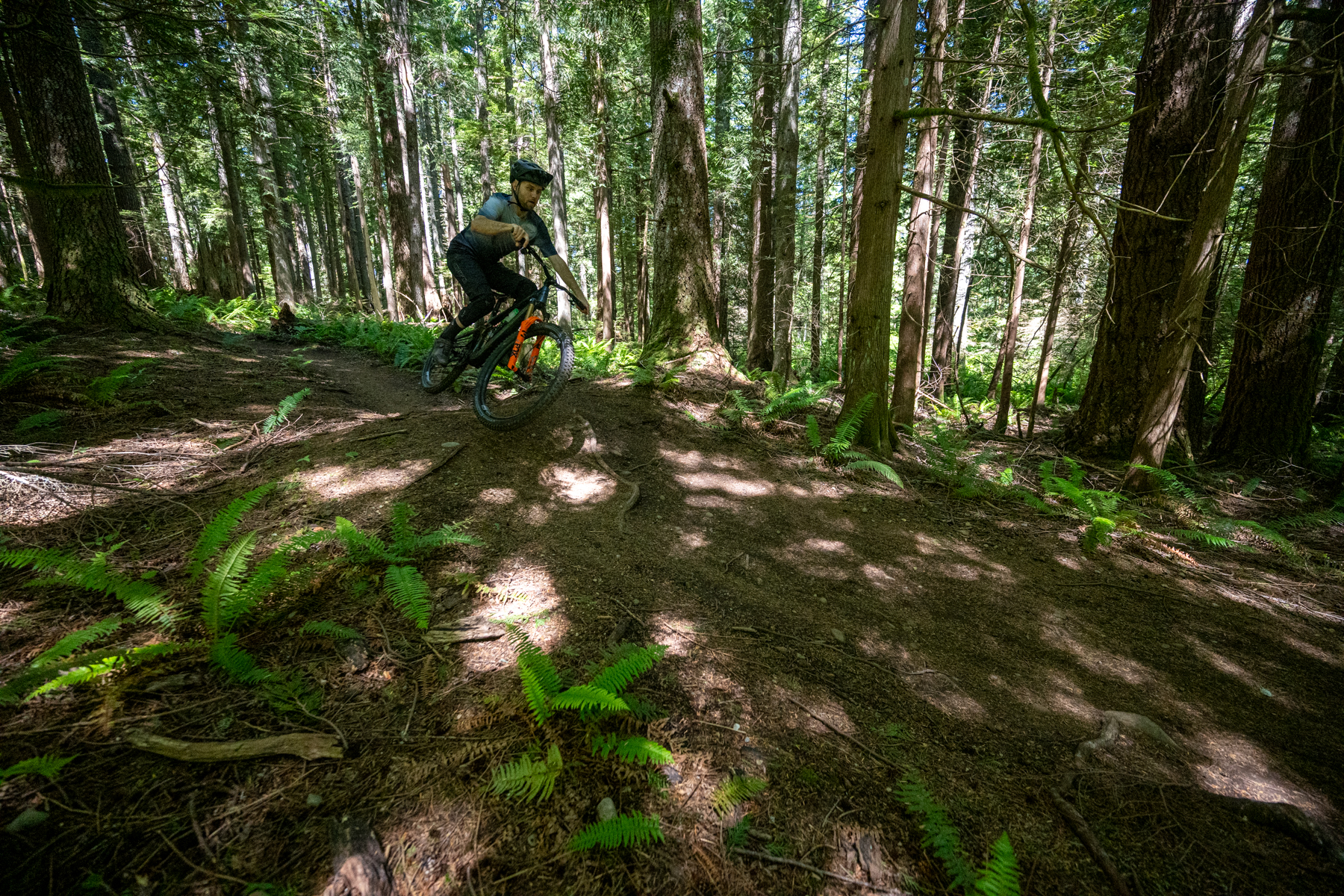
I also didn’t get along with the stock Fizik Alpaca Terra seat at all, but your mileage may vary on that one. And while the stock tire spec (a Maxxis Minion DHF front / Dissector rear pairing, in Exo+ / MaxxTerra construction at both ends) is plenty reasonable, I did swap in some burlier, stickier options for the wetter winter months.
Norco has also clearly paid attention to the details when it comes to the Optic’s construction and serviceability. The idler pulley adds a few parts and a little complexity, but the hardware is all well laid out and easy to work on; the trunnion shock mount spacers are held captive in the bearings better than most, to make installing the shock easier; the chainstay protection is effective; and the other details like the cable routing are also well sorted out.
Who’s It For?
I think the Optic is going to appeal most to riders who spend a lot of time on longer-travel Enduro or DH bikes, but who want a shorter-travel, more lively option for trails that merit that sort of bike. Its pedaling position feels more reminiscent of a big Enduro bike than an XC one, but the Optic is an efficient, sharp-handling bike that’s a lot of fun on a wide variety of trails, from fast and flowy to relatively steep and technical. Riding burly trails on the Optic requires relatively precise, dynamic riding, but the Optic is lively and quick-handling enough to facilitate that well, and it’s a lot more fun everywhere else than most bikes that offer a big step up in stability and composure in bigger terrain.
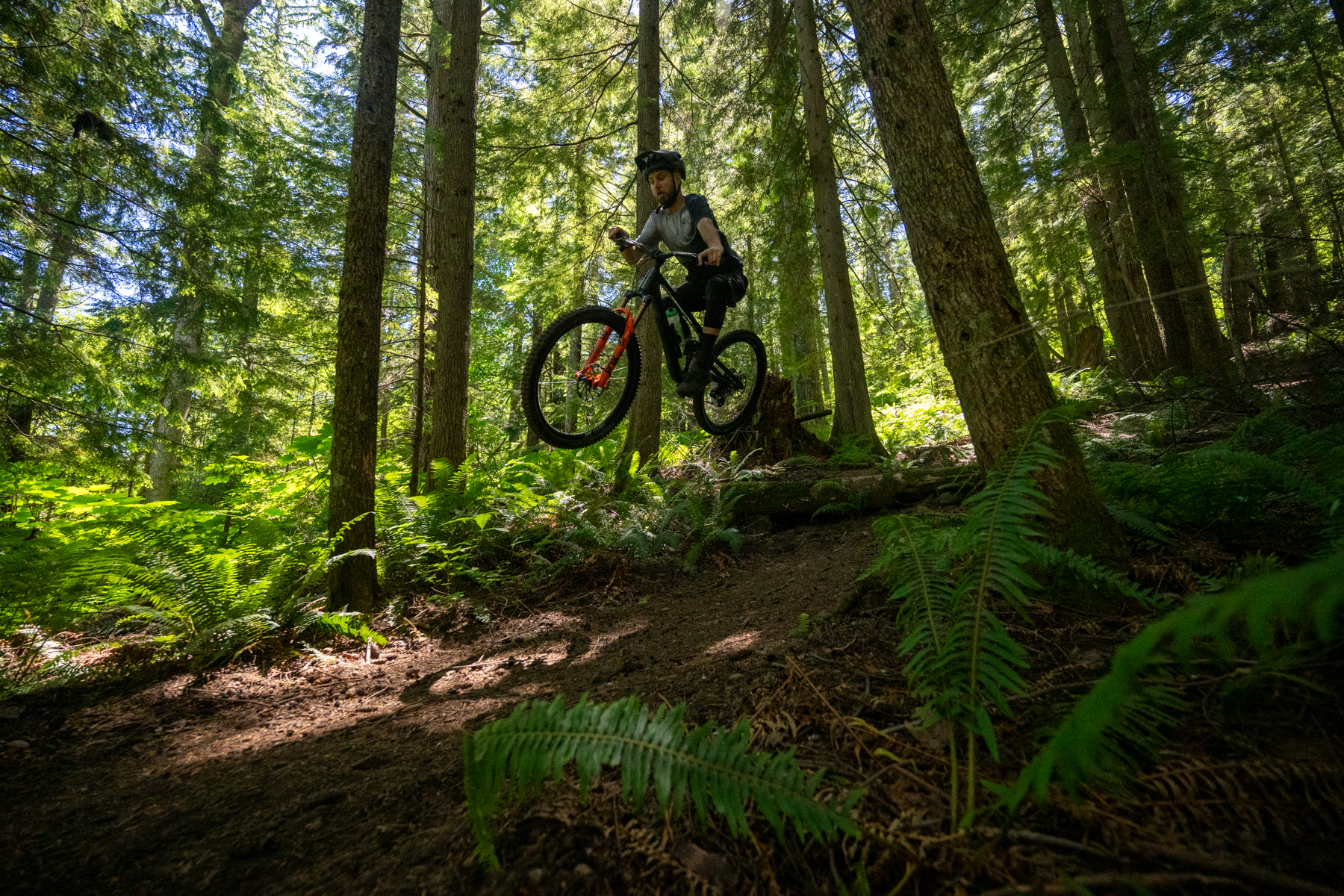
Bottom Line
The high-pivot layout on the new Norco Optic has understandably drawn a lot of attention, but I don’t think it’s really the bike’s defining feature. The Optic is a very good short-travel Trail bike that just so happens to have a high-pivot layout, rather than being transformed into something category-defying by it. And while it’s easy to ascribe a certain set of ride characteristics to a given suspension layout, the Optic is a great example of the limitations of that line of thinking. When things get steep and rough, the Optic doesn’t disguise the fact that it’s a fairly short-travel Trail bike, but it’s a whole lot more versatile than a lot of folks will probably expect for it.
Deep Dive Comparisons
BLISTER+ members and those who purchase our Digital Access Pass can check out our Deep Dive comparisons linked below. Get our Digital Access Pass to view all our Deep Dives and Flash Reviews, or become a BLISTER+ member today to get access to that and a LOT more, including the best worldwide Outdoor Injury Insurance, exclusive deals and discounts on skis, personalized gear recommendations from us, and much more.

Deep Dive: 2024 Norco Optic
We compare the Norco Optic to the Transition Smuggler, Deviate Highlander II, Norco Sight, Canyon Spectral 125, Chromag Darco, Santa Cruz Tallboy, Rocky Mountain Element, Yeti SB135, and Revel Rascal V2.
Blister’s Flash Reviews and Deep Dives are accessible to those who purchase one of our paid subscriptions
To get our comprehensive Deep Dives and our initial, unfiltered reports on new gear, become a member and receive many other services, deals, and discounts.
If you’re already an active member, please log in.
(If you’re already logged in and a member in good standing and seeing this message in error, please refresh this page in your browser.)

I really have to applaud Norco for pushing the high pivot design envelope a ways down the travel ladder.
But your statement “A thought I haven’t been able to shake since I started spending time on the Optic, though, is wondering just how much Norco is really getting out of the high-pivot layout.” sums up my thoughts exactly.
It seems like this 125 mm bike could be just as great without the complexity and weight of the high pivot. Still, chapeau to Norco!